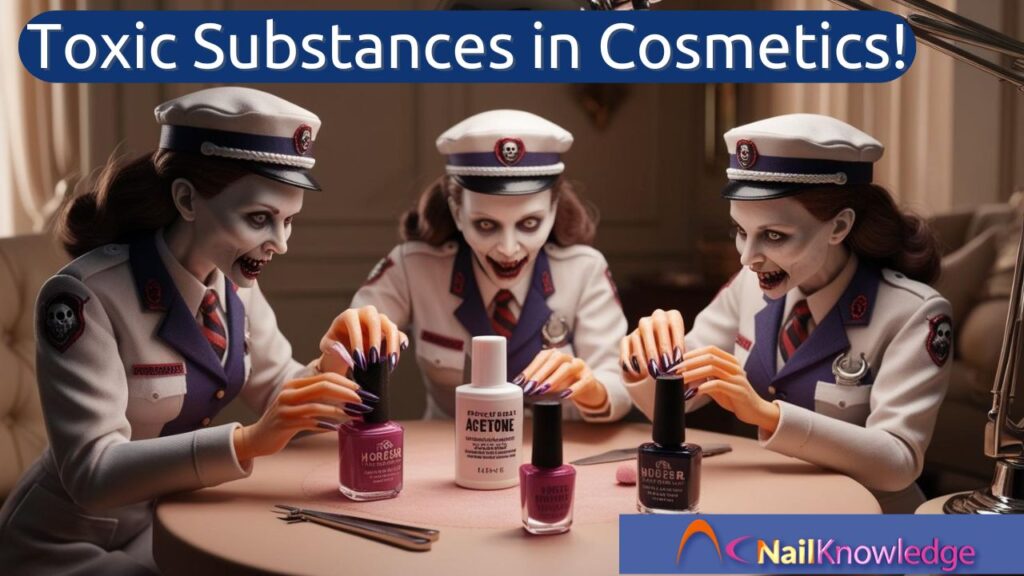Are We Being Misled?
Let’s talk about a question that stirs up a lot of emotions in the beauty world: Why are there toxic substances in cosmetics, and why don’t manufacturers just take them out? At first glance, it seems like a fair question, but when you dig a little deeper, it reveals more confusion than clarity. And that’s exactly the problem.
This kind of question is what experts call a “loaded question.” Why? Because it’s built on assumptions, ones that aren’t necessarily true. It presumes that cosmetics contain harmful levels of toxins, and that manufacturers are either careless or malicious in refusing to remove them. But is any of that actually true?
Let’s unpack this with science, not speculation, and bust some of the most persistent myths surrounding toxic substances in cosmetics.
Understanding the Fear Around Toxic Substances in Cosmetics
We need to start with a fundamental truth: cosmetic products are among the safest consumer goods available. That’s not just an opinion. Regulatory bodies like Health Canada and the U.S. FDA have consistently maintained this stance. The idea that these products are “toxic” is not supported by credible science, it’s a narrative driven by fear-based advocacy groups who love to shout about danger but are suspiciously quiet when it comes to actual evidence.
Now, here’s where it gets tricky. People often assume that if a substance can be toxic, it must be dangerous at any level. But this is simply not true. Think about salt. Too much of it can be lethal. Yet, in the right amount, it’s essential for life. Context, and concentration matters. That’s why claims about “toxic substances in cosmetics” often miss the mark.
Are There Really Toxic Substances in Cosmetics?
Let’s take a closer look at the usual suspects, those scary-sounding ingredients that get dragged through the mud on social media and in flashy headlines.
1. Formaldehyde
Yes, it’s in some cosmetics, but in microscopic trace amounts, typically under 0.01%. That’s about the same amount found naturally in apples, grapes, and even in the air you exhale. Our bodies produce formaldehyde to build proteins. It’s also used in cosmetics as a preservative, making products safer by preventing the growth of bacteria and mould.
In fact, the trace levels used in nail hardeners, for example, are nowhere near what would be considered harmful. International safety guidelines, such as those from the ACGIH, set the bar far higher than what’s found in these products.
2. 1,4-Dioxane
Often mistaken for “dioxin” (a completely different, far more dangerous chemical), 1,4-dioxane is another misunderstood ingredient. Found in trace amounts in shampoos and cleansers, it’s not added deliberately but can occur as a by-product during manufacturing. It also happens to be naturally produced by fruits like bananas and tomatoes.
It’s not about manufacturers being sneaky, it’s about making gentler cleansers that don’t irritate the skin. Ironically, the very ingredients used to make products safer and milder are the ones being villainised.
3. Parabens
The poster child for cosmetic fear campaigns, parabens have been wrongly linked to breast cancer thanks to a single, flawed study that has since been thoroughly discredited. Follow-up research found no causal link whatsoever. Still, the myth persists, despite the fact that parabens are among the safest and most effective preservatives in cosmetics.
What’s more, they occur naturally in blueberries, carrots, and cocoa beans. Yes, even the organic kind. Nature isn’t toxin-free, and not all synthetic ingredients are harmful.
4. Lead
This one really gets people’s blood boiling. Advocacy groups often point to trace amounts of lead in lipstick as proof that cosmetics are dangerous. But here’s the kicker, those levels are so low, you’d have to eat five tubes of lipstick a day to reach unsafe levels. The U.S. FDA and Health Canada have both confirmed that lead levels in cosmetics pose no risk.
Lead is naturally present in soil, water, and even air. You can’t completely avoid it. The key is keeping exposure well below harmful levels—which cosmetics do.
Junk Science vs Real Science
One of the biggest culprits in all this fear-mongering? Junk science. That’s when groups misuse or twist scientific findings to fit their agenda. These organisations often rely on sensationalism to rake in donations, not facts to inform the public. They frame their arguments around half-truths and loaded questions, making experts look like they’re hiding something.
Science isn’t meant to scare, it’s meant to clarify. As Canadian chemist Dr. Joe Schwarcz puts it, “Toxicity depends on concentration and route of exposure, not just presence.” That means something might be dangerous when swallowed but perfectly safe on the skin. Think of it this way: rubbing salt on your skin is harmless, but eating too much could send your blood pressure soaring.
So, Should We Worry?
The short answer? No. The presence of potentially toxic substances in cosmetics doesn’t mean they are harmful. The word “potentially” is key. Water, vitamins, even natural essential oils like tea tree and lavender can be toxic at high doses. But we don’t panic about eating bananas or using shampoo, do we?
The difference lies in how much, how often, and how it enters the body. Regulators assess all these factors before approving ingredients for use. When they say it’s safe, it’s because it is, based on real science, not social media.
Final Thoughts
It’s time we stopped letting fear-based advocacy groups control the narrative around beauty products. Their tactics rely on scaring people with headlines like “toxic substances in cosmetics” while conveniently ignoring the actual science. The truth is, cosmetic products undergo rigorous testing and are highly regulated to ensure safety.
So, next time you hear someone panicking about a chemical in their moisturiser, remind them: everything is a chemical, even water, and it’s the dose that makes the poison.
Let’s embrace knowledge, not fear.


